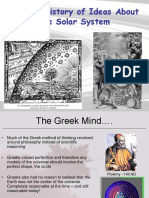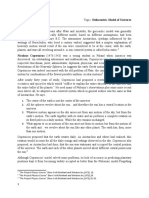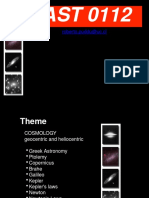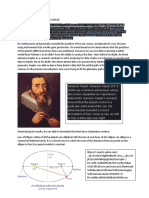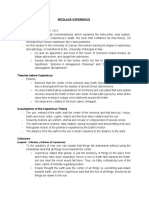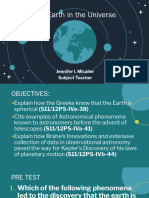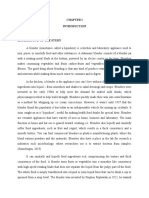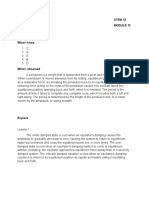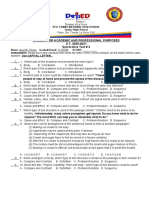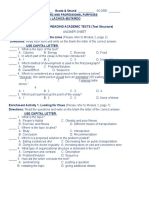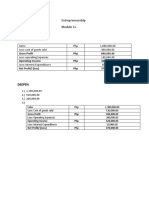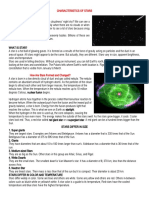0% found this document useful (0 votes)
264 views3 pagesGeneral Physics Module 11
1) Johannes Kepler resided in Graz, Austria but was expelled in 1600 due to religious and political strife. He then served as an assistant to Tycho Brahe in Prague.
2) Brahe had made very precise astronomical observations and was impressed by Kepler's previous work. However, he mistrusted Kepler and only allowed him access to some of his planetary data.
3) Brahe tasked Kepler with deciphering the orbit of Mars, which did not match the descriptions of Aristotle and Ptolemy. After struggling, Kepler realized the planets orbit in ellipses rather than perfect circles, solving the issues with Mars' orbit.
Uploaded by
Angel PicazoCopyright
© © All Rights Reserved
We take content rights seriously. If you suspect this is your content, claim it here.
Available Formats
Download as DOCX, PDF, TXT or read online on Scribd
0% found this document useful (0 votes)
264 views3 pagesGeneral Physics Module 11
1) Johannes Kepler resided in Graz, Austria but was expelled in 1600 due to religious and political strife. He then served as an assistant to Tycho Brahe in Prague.
2) Brahe had made very precise astronomical observations and was impressed by Kepler's previous work. However, he mistrusted Kepler and only allowed him access to some of his planetary data.
3) Brahe tasked Kepler with deciphering the orbit of Mars, which did not match the descriptions of Aristotle and Ptolemy. After struggling, Kepler realized the planets orbit in ellipses rather than perfect circles, solving the issues with Mars' orbit.
Uploaded by
Angel PicazoCopyright
© © All Rights Reserved
We take content rights seriously. If you suspect this is your content, claim it here.
Available Formats
Download as DOCX, PDF, TXT or read online on Scribd
/ 3























